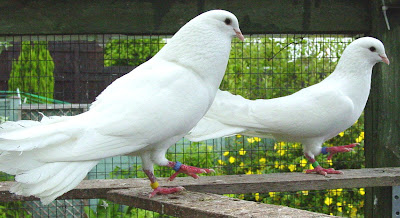+kitten+Edale+YHA.jpg)
There is a current study at Reading University (but involving Dan Forman and Rory Wilson) attempting to accurately assess the impact of pet cats in the UK on wildlife (
http://www.guardian.co.uk/environment/2009/feb/15/cats-kill-wildlife) by using GPS tracking devices on 200 Berkshire moggies in 9 one kilometre squared areas and getting their pet people to complete diaries of carcasses dragged in. The study appears to be somewhat complicated by variations in estimations of the proportions of the catch/kill returned to the home but the authors of the study estimated that there could be more than 600 pet cats per km2, accounting for an estimated 10,000 animals per annum. If this figure is extrapolated over the whole UK (accepting that not everywhere is Berkshire), a figure of 92 million fatalities (including 27 million birds) is obtained. One cat even managed to bring back a weasel. Other 'guestimates' put the annual kill by the UK's 9 million cats as high as 150 to 200 million animals (depending on the numbers of animals eaten on the spot or too heavy to bring back home). No matter what the actual number, it is clear (I don't accept that the cats merely kill the old and weak) that cats have a powerful impact on wildlife.
UP DATE The recent report that 'Animal Behaviorists' in the USA are offering advice on how to keep cats in the house might conceivably help wildlife. Owners are taught how to brush the teeth and cut the claws of their pet. The cat is also trained to sit to command and to walk on a leash (
http://www.hdw-inc.com/leashtraining.htm). Other people have complained about this approach noting that roaming wild and catching things are part of the cat's natural behaviour. This is true but cats are not part of the natural ecology of the USA, the UK or Australia.



+takes+wing+Oxwich.jpg)
 On the Loughor estuary at Bynea, numbers of Bar-tailed godwit (Limosa lapponica) were busy feeding. Carrion crows (Corvus corone corone) were flying up with bivalves from the beach and dropping them on to hard surfaces. In my Loughor garden, a male Blackcap (Sylvia atricapilla) chomped away at early flowers. At the Millennium Wetlands, Llanelli, male Common shoveler (Anas clypeata) were circling in a frisky fashion and Little grebe (Tachybaptus ruficollis) were busy diving.
On the Loughor estuary at Bynea, numbers of Bar-tailed godwit (Limosa lapponica) were busy feeding. Carrion crows (Corvus corone corone) were flying up with bivalves from the beach and dropping them on to hard surfaces. In my Loughor garden, a male Blackcap (Sylvia atricapilla) chomped away at early flowers. At the Millennium Wetlands, Llanelli, male Common shoveler (Anas clypeata) were circling in a frisky fashion and Little grebe (Tachybaptus ruficollis) were busy diving.





+facing+Langland.jpg)

+feeding+Bynea.jpg)
++UWS.JPG)



















+close+UWS.jpg)
+manipulates.jpg)
+kitten+Edale+YHA.jpg)
+group.jpg)







+on+ground+Swansea.jpg)
+black+Gorseinon.jpg)
+in+water+and+rocks.jpg)





%20mating%20NWCW.jpg)

